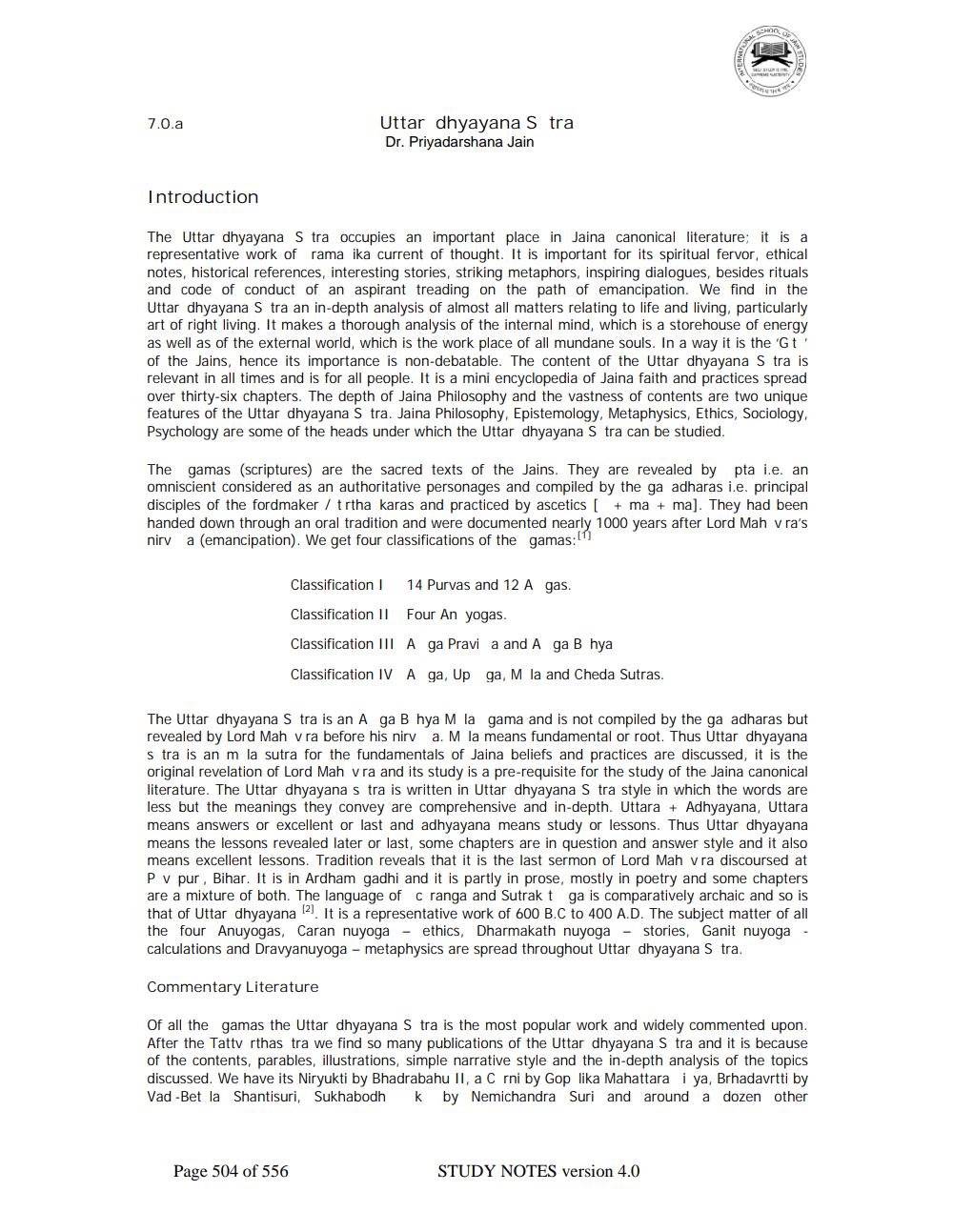________________
7.0.a
Uttar dhyayana S tra Dr. Priyadarshana Jain
Introduction
The Uttar dhyayana S tra occupies an important place in Jaina canonical literature; it is a representative work of rama ika current of thought. It is important for its spiritual fervor, ethical notes, historical references, interesting stories, striking metaphors, inspiring dialogues, besides rituals and code of conduct of an aspirant treading on the path of emancipation. We find in the Uttar dhyayana S tra an in-depth analysis of almost all matters relating to life and living, particularly art of right living. It makes a thorough analysis of the internal mind, which is a storehouse of energy as well as of the external world, which is the work place of all mundane souls. In a way it is the 'G ' of the Jains, hence its importance is non-debatable. The content of the Uttar dhyayana S tra is relevant in all times and is for all people. It is a mini encyclopedia of Jaina faith and practices spread over thirty-six chapters. The depth of Jaina Philosophy and the vastness of contents are two unique features of the Uttar dhyayana S tra. Jaina Philosophy, Epistemology, Metaphysics, Ethics, Sociology, Psychology are some of the heads under which the Uttar dhyayana S tra can be studied.
The gamas (scriptures) are the sacred texts of the Jains. They are revealed by pta i.e. an omniscient considered as an authoritative personages and compiled by the ga adharas i.e. principal disciples of the fordmaker / trtha karas and practiced by ascetics [ + ma + ma). They had been handed down through an oral tradition and were documented nearly 1000 years after Lord Mah v ra's nirva (emancipation). We get four classifications of the gamas:
Classification
14 Purvas and 12 A gas.
Classification II Four An yogas. Classification III A ga Pravi a and A ga B hya Classification IV A ga, Up ga, M la and Cheda Sutras.
The Uttar dhyayana S tra is an A ga B hya M la gama and is not compiled by the ga adharas but revealed by Lord Mah vra before his nirva. M la means fundamental or root. Thus Uttar dhyayana s tra is an m la sutra for the fundamentals of Jaina beliefs and practices are discussed, it is the original revelation of Lord Mah vra and its study is a pre-requisite for the study of the Jaina canonical literature. The Uttar dhyayana s tra is written in Uttar dhyayana S tra style in which the words are less but the meanings they convey are comprehensive and in-depth. Uttara + Adhyayana, Uttara means answers or excellent or last and adhyayana means study or lessons. Thus Uttar dhyayana means the lessons revealed later or last, some chapters are in question and answer style and it also means excellent lessons. Tradition reveals that it is the last sermon of Lord Mah vra discoursed at P v pur, Bihar. It is in Ardham gadhi and it is partly in prose, mostly in poetry and some chapters are a mixture of both. The language of cranga and Sutrakt ga is comparatively archaic and so is that of Uttar dhyayana 2). It is a representative work of 600 B.C to 400 A.D. The subject matter of all the four Anuyogas, Caran nuyoga - ethics, Dharmakath nuyoga - stories, Ganit nuyoga - calculations and Dravyanuyoga - metaphysics are spread throughout Uttar dhyayana s tra.
Commentary Literature
Of all the gamas the Uttar dhyayana S tra is the most popular work and widely commented upon. After the Tattv rthas tra we find so many publications of the Uttar dhyayana S tra and it is because of the contents, parables, illustrations, simple narrative style and the in-depth analysis of the topics discussed. We have its Niryukti by Bhadrabahu II, a Crni by Gop lika Mahattarai ya, Brhadavrtti by Vad - Bet la Shantisuri, Sukhabodh k by Nemichandra Suri and around a dozen other
Page 504 of 556
STUDY NOTES version 4.0




